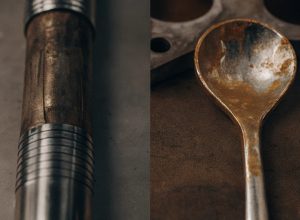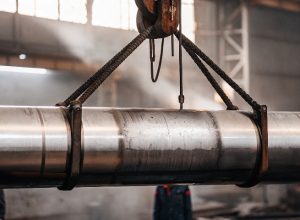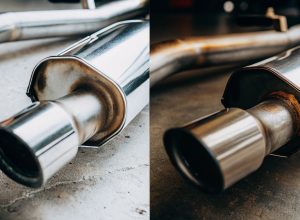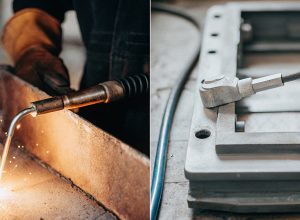Are you worried about receiving titanium rods with hidden defects? A single flawed batch can halt production, creating costly delays. A thorough pre-shipment inspection1 is your best line of defense.
To inspect a titanium rod before shipping, you must perform four key checks. These are: a visual inspection for surface defects2, verification of physical specifications against your order, a review of all documentation for traceability, and confirmation of the material’s mechanical properties through test reports.
Getting your inspection right is not just about quality control; it’s about protecting your entire production schedule and budget. For my clients, like David, a procurement manager in Germany, an unexpected material issue can cause significant problems. He needs to know the titanium arriving at his facility is exactly what he ordered. Over my years helping clients source titanium, I’ve seen how a systematic inspection process prevents these issues. Let’s walk through the steps our team at Shaanxi Titonest takes for every single order to ensure our partners receive perfect material every time.
How to visually identify defects in titanium rods?
A titanium rod might look fine from a distance. But a tiny, hairline crack or slight discoloration could cause a catastrophic failure in a high-stress aerospace or medical part.
To visually check a titanium rod, carefully examine its entire surface under bright, direct light. Look for any linear defects like cracks or scratches3. Also, check for inconsistencies like pits, gouges, or patches of discoloration4, as these can indicate processing errors or structural weaknesses.
At Shaanxi Titonest, our quality inspectors are trained to spot issues that are easy to miss. I remember a case with an aerospace client where a faint blue hue on a batch of rods was the only sign of improper heat treatment. Catching it before shipment saved them from a potential component failure. Visual inspection is your first, and arguably most important, quality gate. We look for a clean, uniform surface with absolutely no surprises. You must check the entire length of the rod, rotating it slowly to ensure every part is seen.
Key Visual Defect Indicators
A simple checklist can help structure your visual inspection. Here are the most common defects we look for and what they might mean for your application.
| Defect Type | What It Looks Like | Potential Impact |
|---|---|---|
| Cracks | Fine lines, either straight or jagged | High risk of structural failure under load. |
| Discoloration | Blue, purple, or straw-colored patches | Can indicate improper heat treatment or contamination. |
| Pits/Gouges | Small holes or carved-out indentations | Acts as a stress concentration point, can lead to cracks. |
| Scratches | Surface-level lines of varying depth | Deeper scratches can become crack initiation sites. |
| Laps | A folded-over metal flap on the surface | A serious defect that compromises material integrity. |
How to verify titanium rod specifications against customer requirements?
You ordered Grade 5 titanium rods at a precise diameter for your equipment. But imagine the shipment arrives and it is Grade 2, or the dimensions are just slightly off. It’s now useless.
Use calibrated instruments like a digital caliper or micrometer5 to measure the rod’s diameter, length, and straightness. Cross-reference these physical measurements and the material grade listed on the paperwork directly against your original purchase order to prevent expensive mismatches and production holds.
In my experience, a mismatch in diameter tolerance or grade certification is the most common reason for a customer to reject a shipment. This is why we have a strict double-check policy. Every dimension is measured and recorded. Our team uses calibrated gauges to ensure accuracy down to the micrometer. A procurement manager like David can’t afford a shipment that doesn’t fit his company’s machinery. Even a small deviation can render a whole batch of material unusable. This step is about ensuring the physical material exactly matches the numbers on the purchase order.
Critical Specification Checklist
This check is straightforward but critical. You are confirming that what you are about to ship is exactly what the customer asked for.
| Specification | Tool Used | Why It Matters |
|---|---|---|
| Diameter/Tolerance | Calibrated Micrometer/Caliper | Essential for ensuring the rod will fit into machinery or final components. |
| Length | Tape Measure | Prevents material waste from short rods or shipping extra, unneeded material. |
| Material Grade | Match MTC to Purchase Order | Guarantees the chemical, physical, and mechanical properties are correct for the application. |
| Straightness | Straight Edge or Laser Gauge | Critical for any application involving rotation or precision machining. |
How to ensure proper documentation before titanium rod shipment?
Your titanium rods have finally arrived at the port. But customs holds the shipment because the paperwork is missing. Or your quality team rejects it because there is no traceability.
Before shipping, confirm that a complete set of documents is included with the order. The most important document is the Mill Test Certificate (MTC), which lists the material’s heat number, chemistry, and test results. This paperwork provides full traceability, a non-negotiable for most buyers.
Proper documentation is not an optional extra; it is part of the product itself. Leading international buyers, especially those in Europe and the U.S., require a complete traceability record6. This is why we always include mill test certificates, unique heat numbers stamped on the material, and any required compliance sheets with every order7. The Mill Test Certificate is the material’s birth certificate. It proves where it came from and that it meets the required standards like ASTM or AMS. For our clients in the aerospace, medical, or chemical industries, this paperwork is essential for their own quality and regulatory compliance.
Essential Shipping Documents Breakdown
Without the right documents, even the highest quality titanium is useless to a regulated manufacturer. Here is the key paperwork to look for.
| Document | Purpose | What to Check for Accuracy |
|---|---|---|
| Mill Test Certificate (MTC)8 | Proves the material conforms to industry standards. | Heat number, chemical analysis, and mechanical test results must match the material and PO. |
| Packing List | Details the exact contents of the shipment. | Must match the physical count of rods, dimensions, weights, and the purchase order. |
| Certificate of Origin | States the country where the material was produced. | Required by customs for clearance and to determine correct tariffs. |
| Compliance Sheet | Confirms adherence to specific regulations (e.g., DFARS, REACH). | Must match any special requirements listed in the customer’s contract. |
How to confirm mechanical properties of titanium rods before delivery?
The rod’s dimensions are correct, and the grade is right. But if it doesn’t have the strength it is supposed to, it could bend or break under load. This could lead to asset damage or safety risks.
To confirm mechanical properties, you must review the Mill Test Certificate (MTC)8. Look for the sections detailing tensile strength, yield strength, and elongation. Check that these reported values meet or exceed the minimum requirements for the specific titanium grade per its ASTM or AMS standard.
Testing for tensile strength, elongation, and yield strength is a standard part of our quality control process. We use ASTM-compliant testing machines to pull apart sample pieces from each batch. This gives us the hard data to prove the material will perform as expected. For example, a medical implant needs a certain amount of ductility (elongation) so it doesn’t fracture, while a structural aerospace part needs extremely high tensile strength. The test results on the MTC are our guarantee to the buyer that the material is fit for its intended job. It’s the final scientific check that confirms the rod is not just the right shape and size, but also has the right character.
Understanding Key Mechanical Tests
These numbers on the MTC are not just abstract figures; they describe how the material will behave in the real world.
| Mechanical Property | What It Measures | Why It’s Important for Titanium Rods |
|---|---|---|
| Tensile Strength (UTS) | The maximum pulling force a material can handle before it breaks. | This determines the rod’s ultimate load-bearing capacity in tension. |
| Yield Strength | The point at which the material starts to bend or deform permanently. | This is critical for structural parts that must hold their shape under stress. |
| Elongation | How much the material can stretch before it fractures. | This indicates the material’s ductility and its ability to be formed or resist impact. |
| Reduction of Area | How much the cross-section narrows at the fracture point. | This is another key indicator of the material’s ductility and quality. |
Conclusion
A detailed pre-shipment inspection1 protects your projects and your reputation. By checking visuals, specs, documents, and mechanical tests, you ensure you get the right titanium, ready for immediate use.
-
Understanding pre-shipment inspection helps you avoid costly delays and ensures you receive defect-free titanium rods for your projects. ↩ ↩
-
Learning proper visual inspection techniques helps you catch critical flaws early, preventing failures in high-stress applications. ↩
-
Detecting linear defects ensures the structural integrity of your titanium rods, reducing the risk of part failure. ↩
-
Recognizing these defects helps you avoid using compromised material in critical manufacturing processes. ↩
-
Using precise tools ensures your titanium rods meet exact specifications, preventing costly mismatches. ↩
-
Traceability records protect your supply chain, ensuring accountability and compliance with industry standards. ↩
-
Compliance sheets confirm adherence to regulations, protecting you from legal and quality issues. ↩
-
The MTC provides traceability and proof of compliance, which is vital for regulated industries and customs clearance. ↩ ↩













